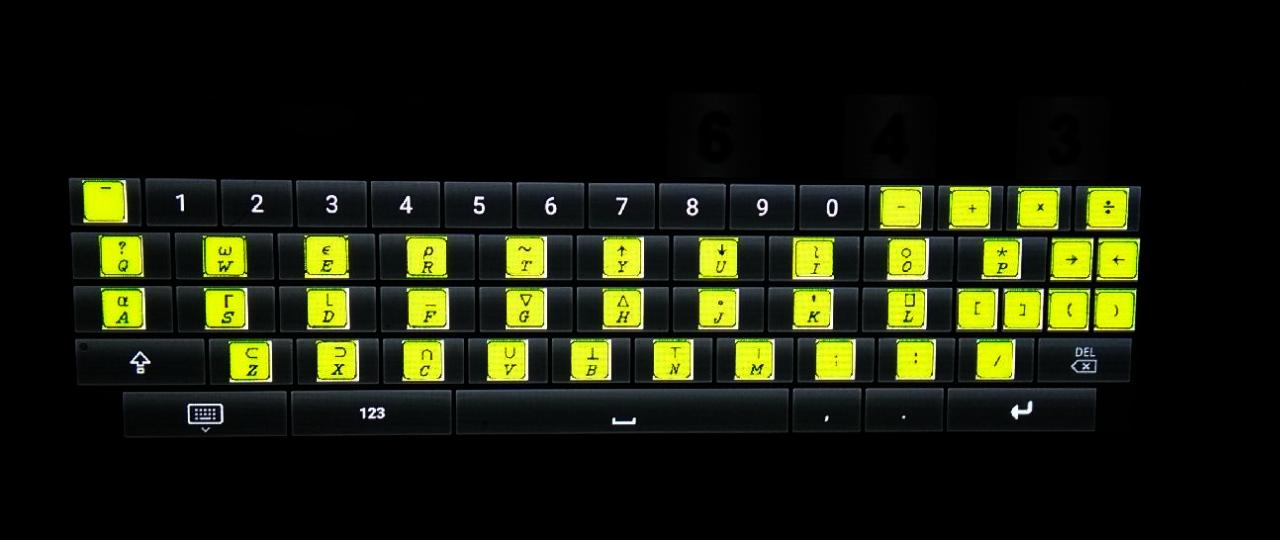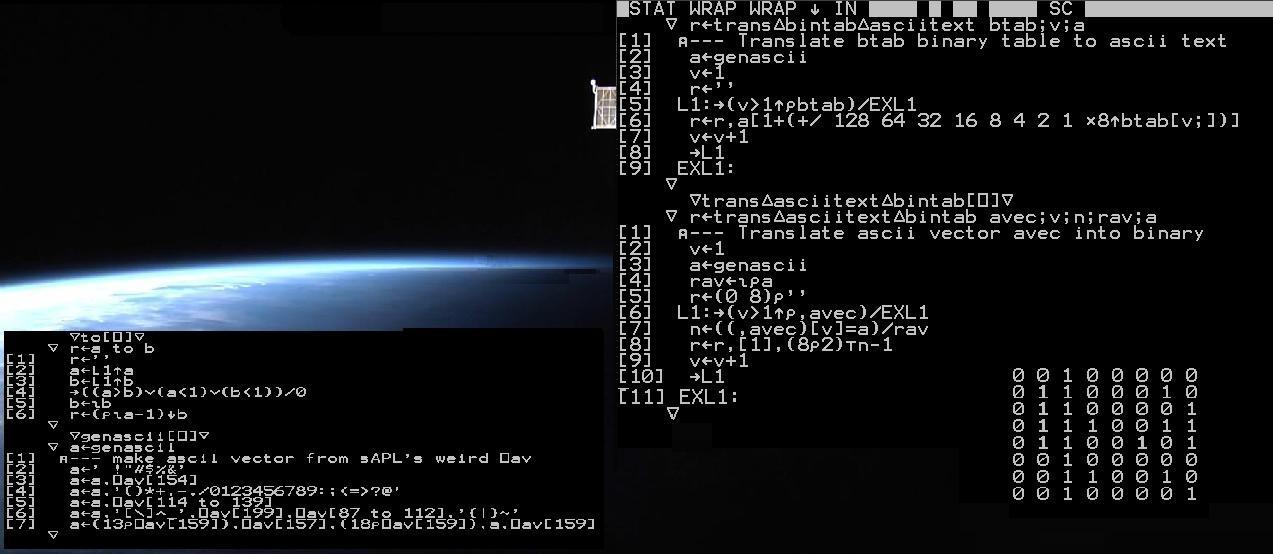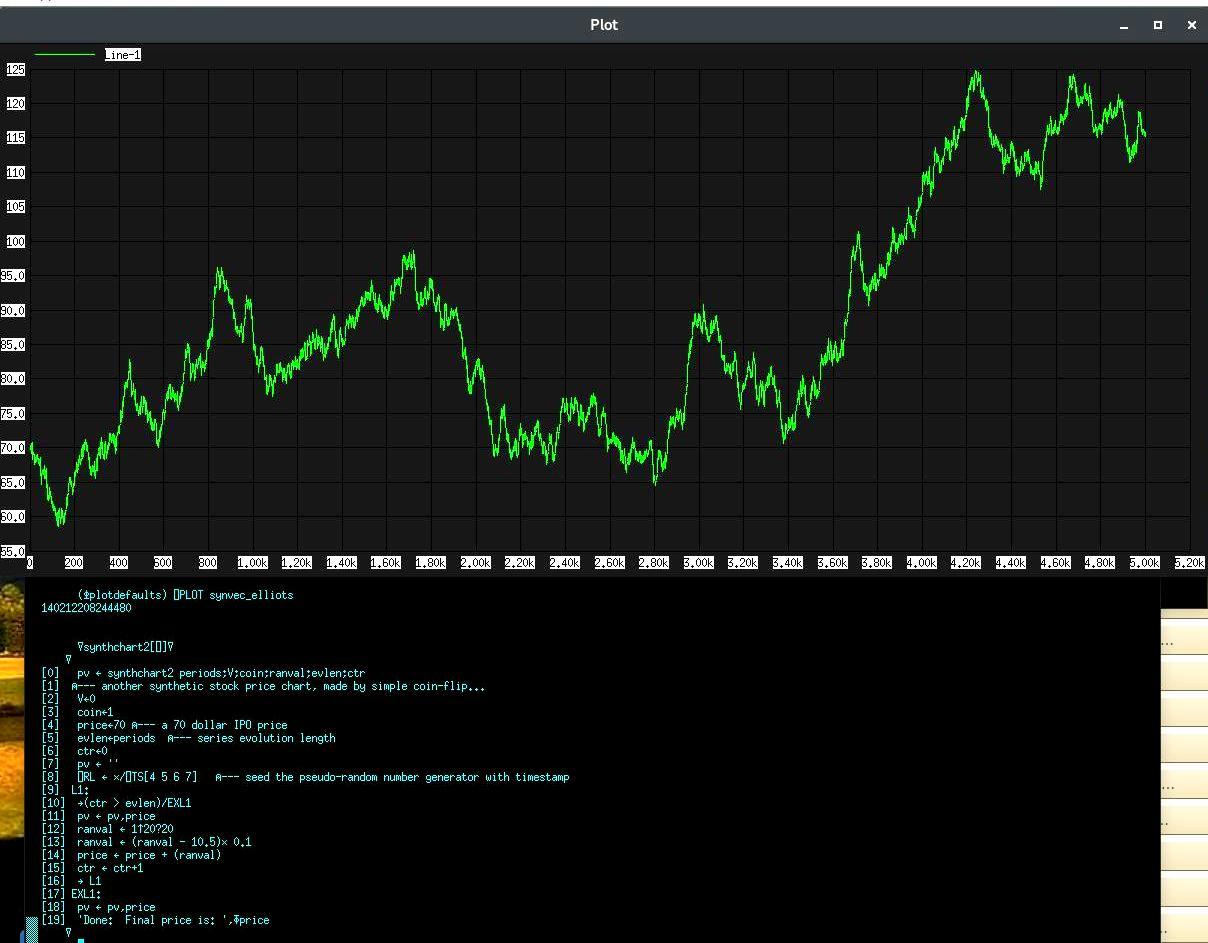This was a sketch I did of an early prototype of some of the market-hacking software. We've had to build a lot of custom material, just to get to a starting point. Some of it has worked very well, and some of it has not worked so well. But despite all the madness in the world, and market-crazy action, we are still here, we have no debt, and we are cash-flow positive, and keeping the lights on! :)
This is an image I found, from Paul Friedl, of the first real personal computer - the IBM SCAMP (Special Computer, APL Machine Portable), circa 1973. I bought my generation-1 Apple iPad in 2010, fully intending to put a working APL on it, one way or the other. Thank-you "redsn0w", for your jailbreak, and to Chaoji Li in China, who did the first DOSbox port to iPad. And thank-you "Saurik", aka Jay Freeman, for his Cydia project, and to everyone who contributed to making the iPad actually work as a proper computer, instead of the child's toy Apple seems to have wanted it to be. Fine work, guys. - Mark Langdon, GEMESYS Ltd.
I have hacked and "jailbroken" my iPad Gen-1, and have loaded sAPL on it. This was the APL product I originally released on the Blackberry Playbook, and remains available for Android devices, from the Google PlayStore. (A Windows Cmd-shell and/or DOSbox version of sAPL is available from the Gemesys Github account, as a .zip file.) sAPL is a P/C version of the original IP Sharp APL mainframe product, which ran on IBM 370's, and Amdahl V8's. This iPad version, running under DOSpad, provides a workspace just over 300K. It is a small, but reliable, implementation of a full APL. The hack involved jailbreaking the iPad with Redsn0w, which then installs the excellent Cydia environment, which allows installation of all the Linux/Unix utilities, including OpenSSH, related network utilities, and various Linux/Unix utilities such as PSTree, Screen, VIm, etc.
Our small planet, as seen from the ISS (International Space Station) HDEV cameras, but with a bunch of sAPL code overlaid on the image. I've been messing about with how I want the market characterization vector to look like - playing with ideas for using a boolean vector to describe subsequence mkt conditions - ie. what the NN will train to identify. Looked at xkcd cartoon #540. It has little boolean matrix in bottom right corner. So I use sAPL to translate. (sAPL is the Sharp APL interpreter that ran on an Amdahl - but converted to run on an emulator, which runs on an X86. With gDOSbox running on the iPad, emulating an X86 running DOS, sAPL can run on the iPad, on any Android device (it's in the Playstore - totally free, no adverts), and a zipped version is on my github account, which will run on any Windows version, in cmd shell. It will also run on Linux, under DOSemu (CentOS, Fedora tested). Tiny workspace, but accurate numbers. ) Since the sAPL quadAV (atomic vector) is from an EBCDIC machine, I had to write a "genascii" function to create the 128 long ascii vector. Probably one of the more silly things I've done in years. Since I wrote one to translate boolean to ascii, I had to write the flipside, to convert ascii to boolean. For those who are unfamiliar with APL, imagine a mashup of Perl with Python, and then boiled down to very bare essentials, and expressed using single-character greek letters, like mathematicians prefer. The language was conceived by Ken Iverson, implemented by IBM, and before spreadsheets and personal computers, was the #1 internal language at IBM. It also was the first language on the first personal computer, the IBM Scamp (Special Computer APL Machine Portable), released in 1973.
Here is an example where there is no there - there.
The little APL program at screen bottom, "synthchart2", generated the data series shown. Really. Any training exercise on it, will really just be an assessment of the quality of the pseudo-random number generator embedded within the program's library routines.







